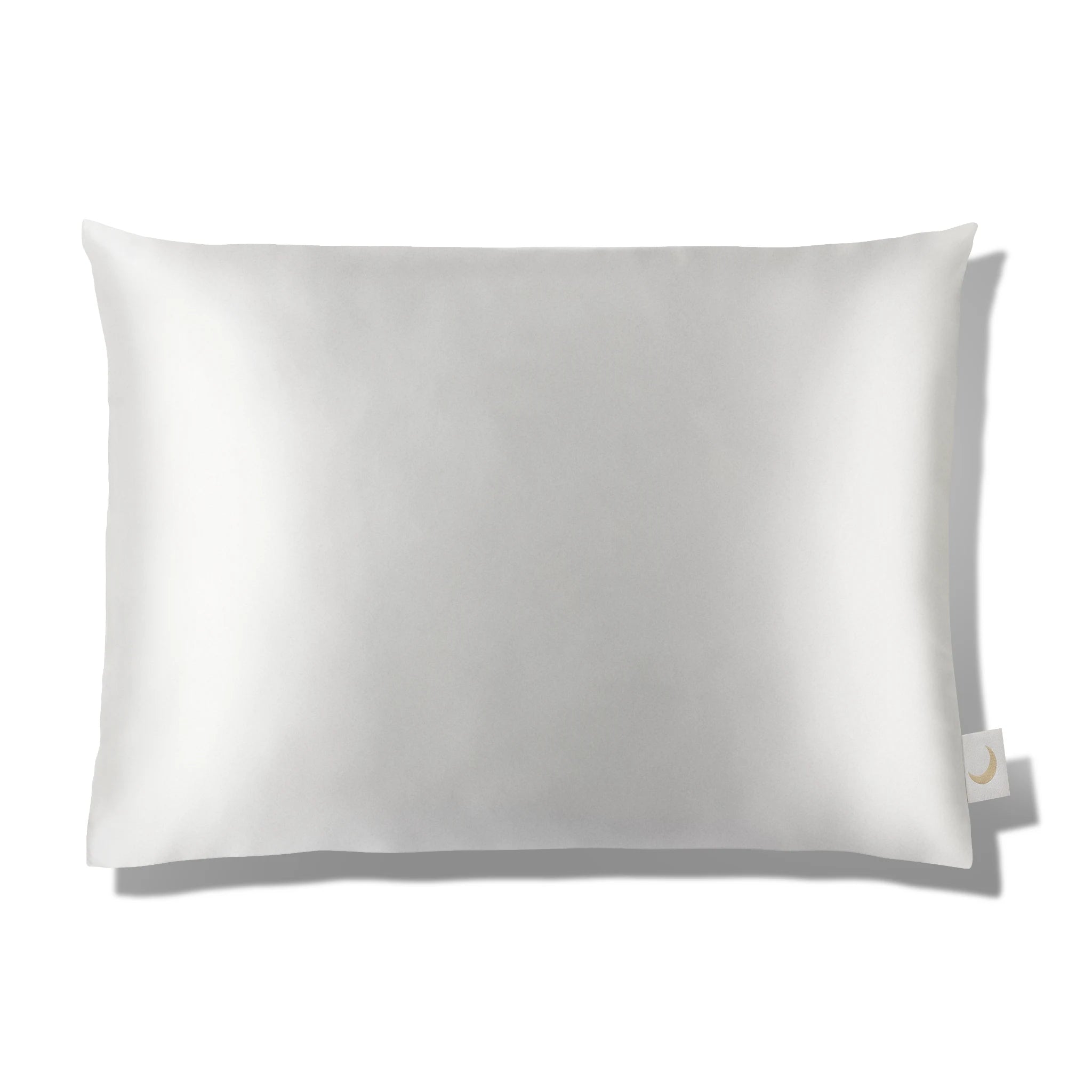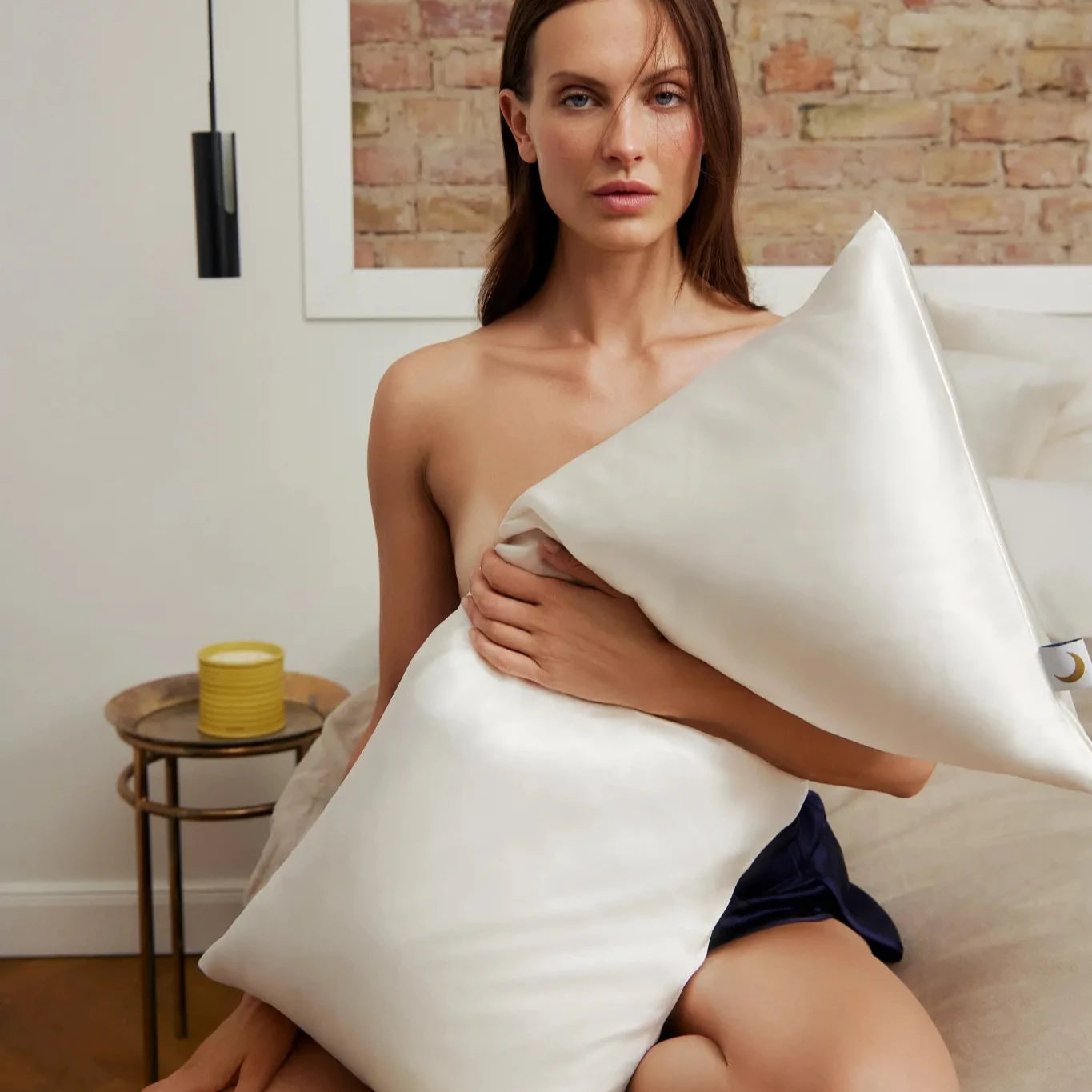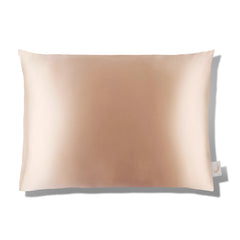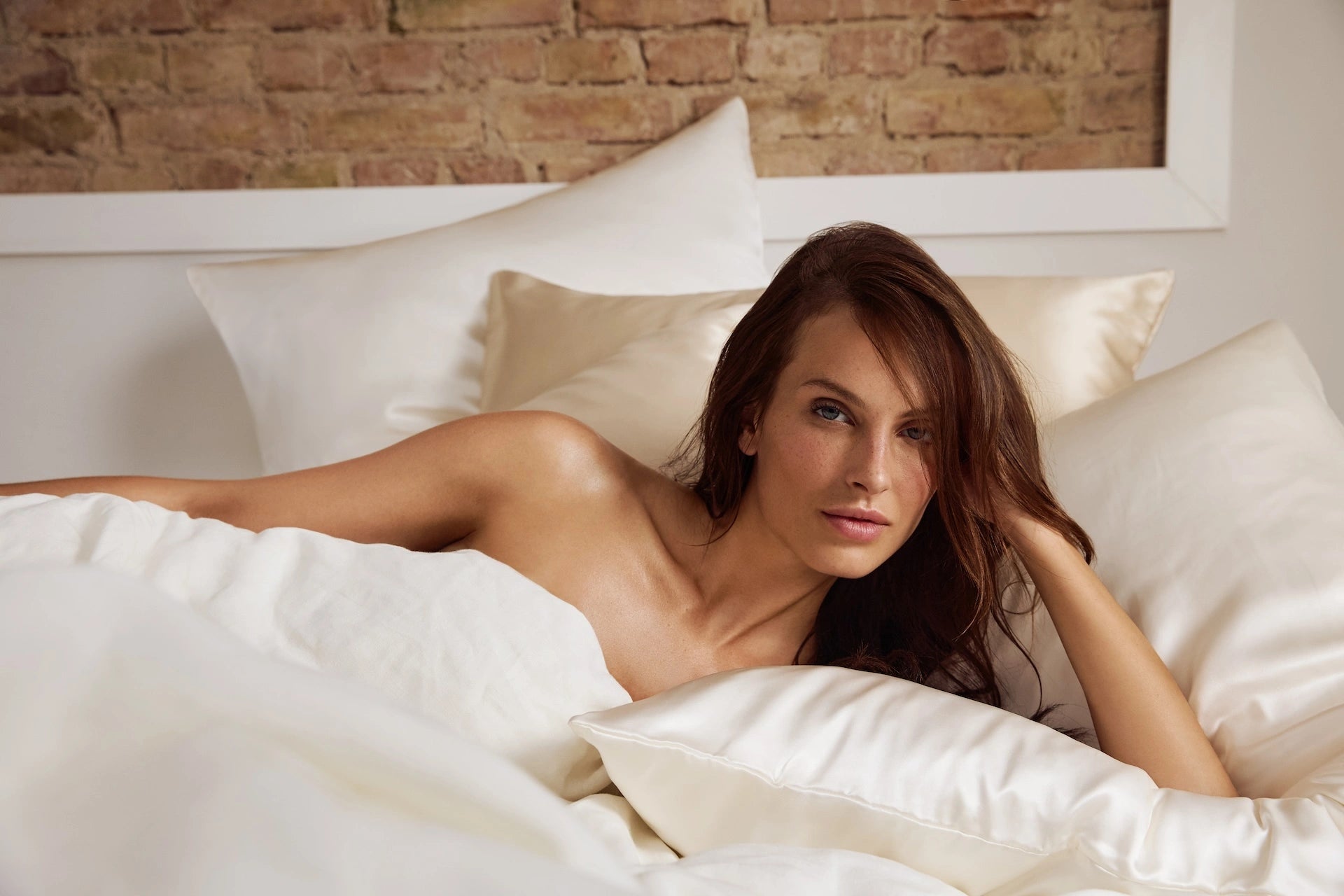'A superior way of living begins with a superior way of sleeping.'
‘When do you launch organic bedding?’ is one of the most frequent questions we receive. So we spent the last five years reflecting, (field-)testing and sourcing throughout Europe to go on a quest for the best and most sustainable bedding. Because we couldn’t settle for anything less than the best.
Organic bedding – what are the best options?
We knew from the beginning that we wanted to use only 100% organic fibers. We tested silk, cashmere, cotton, hemp, bamboo and eucalyptus. Our silk is woven in Como, Italy. For bedding, larger looms would be needed to weave wider fabrics. But those were not available in Europe. They would only be available in China - but sourcing a fabric from China was not an option for us due to the lack of transparency regarding sustainability and labor regulations.
Cotton is soft and breathable, making it a popular choice for bedding. Its affordability also contributes to its widespread use. In our vegan silk alternatives article, we'll explore the pros and cons of silk alternatives such as bamboo and eucalyptus.
What are the benefits of organic bedding made of linen?
Linen is extremely soothing to our skin. It also has antibacterial properties and outperforms cotton in terms of breathability and moisture management. This means we sweat less in the summer and stay warm in the winter. Contrary to popular belief, linen is not just a summer fabric, but is ideal for 365 days of the year.
This is due to its characteristic shape. Flax fibers naturally have a hollow core, called a lumen, that runs through the center of each fiber and is surrounded by a rigid cell wall of cellulose, hemicellulose and lignin. The hollow lumen traps air within the fiber, acting as an insulator and contributing to flax's effective temperature regulation.
Breathability: The hollow core allows air to circulate freely through the fibers. This increased airflow makes Linen highly breathable, keeping the fabric cool and comfortable, especially in warm weather.
Moisture Wicking: The porous nature of flax fibers allows for rapid absorption and release of moisture. Linen can absorb up to 20% of its weight in moisture without feeling damp, helping to keep the skin dry and cool. The absorbed moisture evaporates quickly, further enhancing the cooling effect.
Insulation: The air trapped in the hollow core acts as a natural insulator. Linen keeps us cool in hot weather by allowing heat to escape, but it also provides warmth in cooler conditions by retaining body heat.
Durability: Flax fibers are strong due to the thick cell walls surrounding the hollow lumen. This gives linen its characteristic strength and durability, making it resistant to wear and tear.
Lightweight Feel: Despite its strength, the hollow structure contributes to Linen's lightweight feel. It's substantial enough to provide comfort without the heaviness of thicker fabrics.
Think of each flax fiber as a tube or straw with a relatively thick, strong outer wall and a hollow center. This structure provides the dual benefits of strength and lightness, while the hollow interior allows for the movement of air and moisture, which is central to the breathability and moisture-wicking properties of linen.
In summary, the hollow structure of flax fibers is fundamental to linen's exceptional breathability, moisture management, insulation and durability, making it a superior choice for comfortable and sustainable bedding.
Which organic bedding fabric is better for sleep? Cotton vs Linen Bedding
| Linen | Cotton |
|
|
|
|
Linen fibers are thicker and looser woven, creating more space between the threads. This allows air to circulate more freely, making linen exceptionally breathable. |
Cotton is breathable, but less so than linen. The finer, tighter weave of cotton can restrict airflow compared to linen. |
|
|
|
| Linen absorbs moisture and dries quickly, helping to regulate body temperature and keep you cool in warm weather. |
|
|
|
|
|
|
|
|
|
|
|
|
|
|
|
|
| Because flax requires less water and fewer pesticides, it has a smaller environmental footprint than cotton. This makes flax a more sustainable choice, especially when it comes to water use. The better the flax quality, the less industrial processing is needed. | In some regions, cotton farming can deplete local water resources, contributing to environmental problems such as water scarcity and pollution. |
Flax requires significantly less water to grow than cotton, making linen the more sustainable option in terms of water efficiency. In addition to water use, linen tends to have a lower overall environmental impact due to its reduced need for pesticides and fertilizers. The higher the quality of the flax, the less industrial processing is required to produce high quality linen fabric.
Combining Traditional Techniques with Advanced Sustainable Practices
Outperforming other fibers in both quality and sustainability, linen proved to be the optimal choice for our bedding products. Flax is inherently sustainable, and we've ensured that our linen is sourced in the most environmentally responsible way possible.
European flax fields for the highest quality fiber
We source our flax exclusively from three regions in Europe: Belgium, France and the Netherlands. These areas produce the highest quality long staple flax fiber in the world, resulting in a smoother, stronger and more lustrous fabric. The long staple fibers have fewer knots and impurities, resulting in a more even texture. In contrast, shorter fibers can produce a rougher, less durable fabric and are more likely to contain impurities and irregularities, resulting in a coarser texture.
We adhere to the strictest sustainability guidelines, ensuring that no pesticides are used and that fields have been pesticide-free for at least three years. Our flax and linen are certified organic by third party organizations.

Belgian Mill for Weaving Excellence
We partner with a family-owned mill that has been producing exceptional linen bedding since the 19th century, supplying European royalty. Their craft has been passed down through five generations and remains within the family until today. High quality linen bedding is extremely durable. It is tightly woven with a consistent, even texture that makes it smooth to the touch. It has a natural luster and a refined, elegant look, whereas lower quality linen can be loosely or unevenly woven, resulting in a rougher, sometimes scratchy texture. It may also have an uneven or dull appearance, lacking the natural luster of higher quality linen.
Our mill is carbon neutral thanks to its own solar power system. In addition, our mill has a zero waste policy. The flax dust produced during the weaving process is collected with hovers and used to make dollar bills. Did you know that 25% of dollar bills are made from flax?
Organic bedding - what made us fall in love with linen
High quality linen is characterized by long staple fibers, a smooth and even weave, excellent durability, a refined appearance and superior comfort. It tends to improve over time, making it a worthwhile investment for those seeking long-lasting, luxurious bedding. Lower-quality linens, on the other hand, may be more affordable initially, but can lack the durability, comfort, and aesthetics of higher-quality options, often resulting in a less satisfying experience and a shorter lifespan. We love organic linen bedding and offer it in five colors: white, flax, arancia orange, aquamarine menta and green apple. Our colors are sustainably dyed with botanical dyes, furthering our commitment to environmental, animal and human welfare.
Finding organic bedding: 5 questions to fact check
1. Where is the sewing done? see 'Made in' label
2. Where is the fibre (e.g. flax) grown?
3. Where is the weaving done?
4. Are sustainable practices used?
5. What dying and finishing treatments are applied?




















